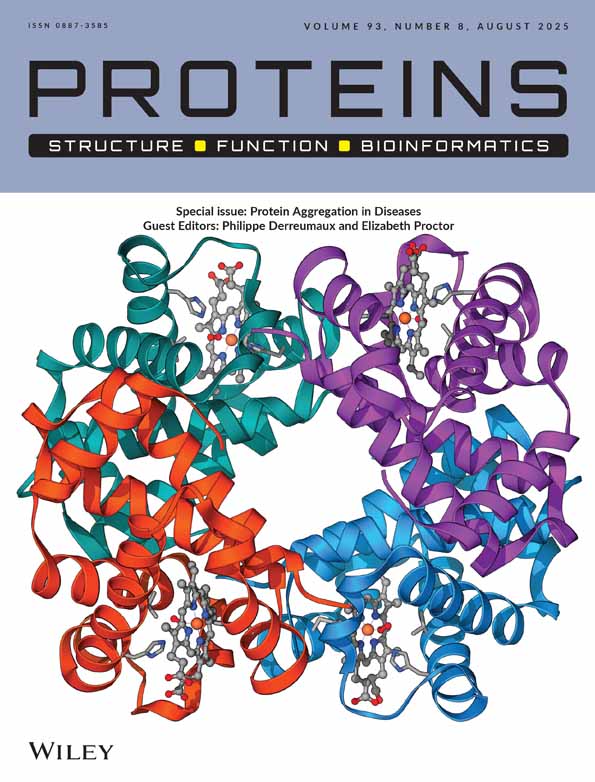Ab initio folding of proteins using restraints derived from evolutionary information
Abstract
We present our predictions in the ab initio structure prediction category of CASP3. Eleven targets were folded, using a method based on a Monte Carlo search driven by secondary and tertiary restraints derived from multiple sequence alignments. Our results can be qualitatively summarized as follows: The global fold can be considered “correct” for targets 65 and 74, “almost correct” for targets 64, 75, and 77, “half-correct” for target 79, and “wrong” for targets 52, 56, 59, and 63. Target 72 has not yet been solved experimentally. On average, for small helical and alpha/beta proteins (on the order of 110 residues or smaller), the method predicted low resolution structures with a reasonably good prediction of the global topology. Most encouraging is that in some situations, such as with target 75 and, particularly, target 77, the method can predict a substantial portion of a rare or even a novel fold. However, the current method still fails on some beta proteins, proteins over the 110-residue threshold, and sequences in which only a poor multiple sequence alignment can be built. On the other hand, for small proteins, the method gives results of quality at least similar to that of threading, with the advantage of not being restricted to known folds in the protein database. Overall, these results indicate that some progress has been made on the ab initio protein folding problem. Detailed information about our results can be obtained by connecting to http://www.bioinformatics.danforthcenter.org/CASP3. Proteins Suppl 1999;3:177–185. © 1999 Wiley-Liss, Inc.




